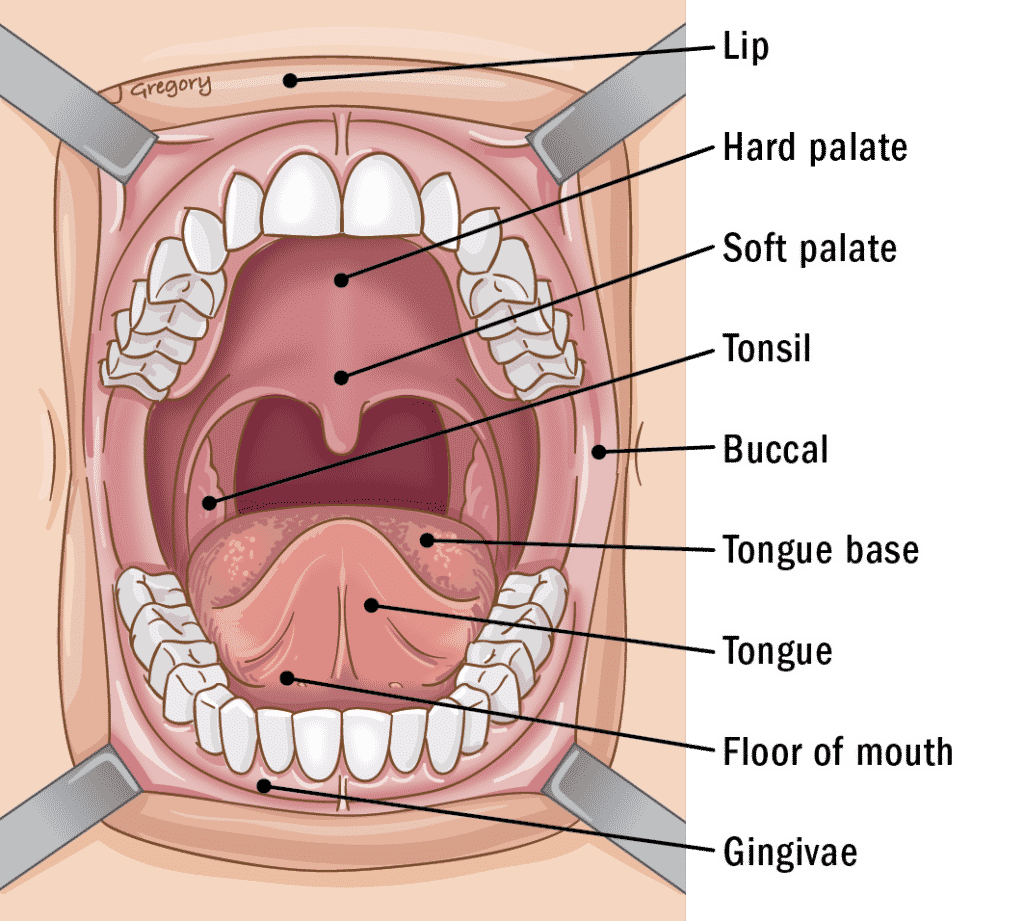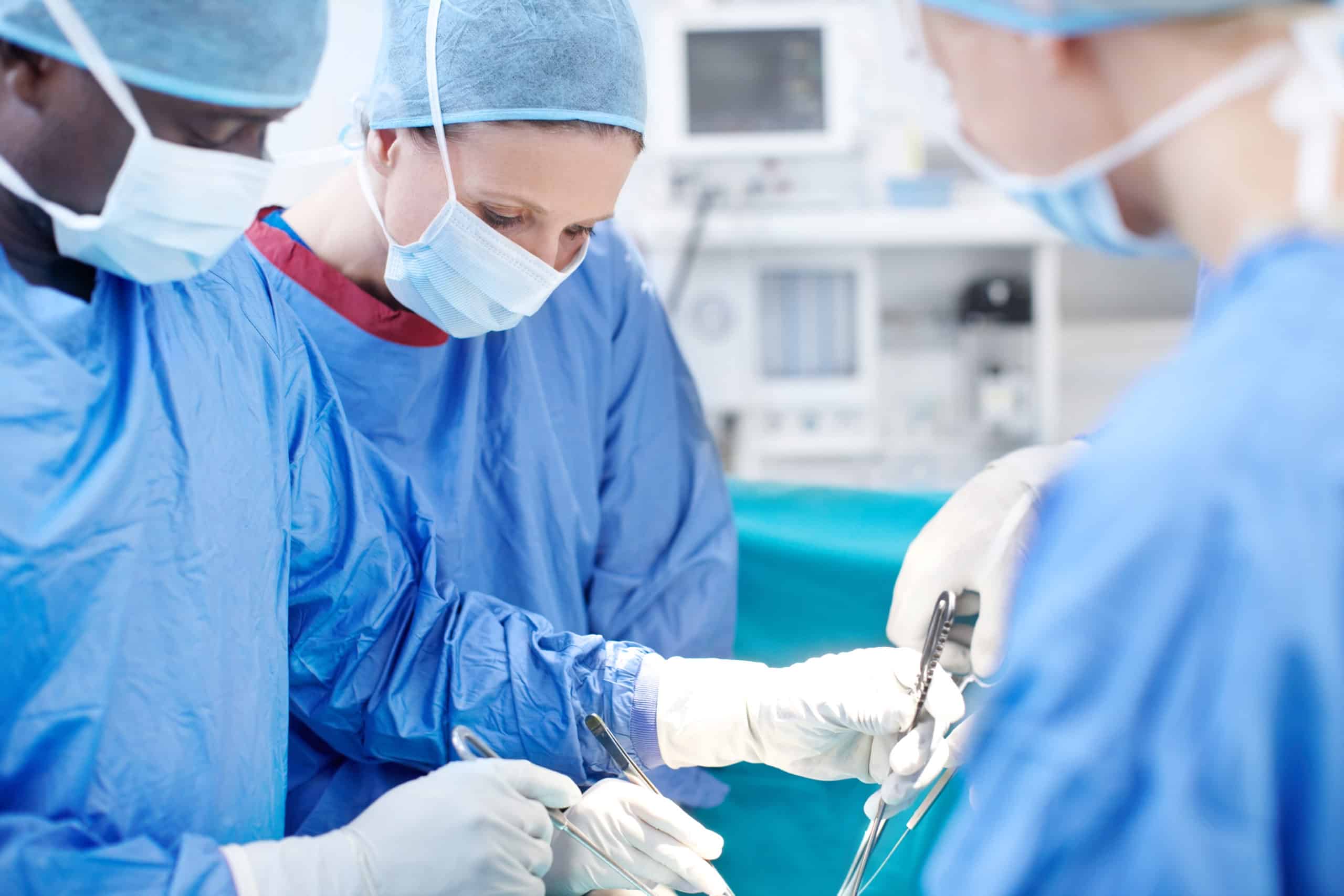
A palate resection is the removal of all or part of the palate (the roof of the mouth). This type of surgery is generally required when cancer approaches or invades the hard palate (the bony portion of the palate) or soft palate (the area located behind the hard palate). It may also be performed for palate issues other than cancer.
Preparing for Surgery
Doctors will give their patients specific instructions regarding what to do before surgery. In general, patients should not eat or drink anything (except essential medications) any time after midnight, the night before surgery. Patients should tell their doctor if they begin to feel sick before surgery.
Depending on the reconstructive plan, some patients might need to get an impression made of their palate to assist in creating a palatal obturator (a prosthetic device used to seal off an opening in the palate). If this is the case, patients should see a prosthodontist prior to surgery.
What to Expect
On the day of surgery, the patient will likely be asked to arrive at the hospital a few hours before the scheduled operation. During this time, nurses will check the patient in and anesthesiologists will ensure that everything is safe for general anesthesia. The surgeon will also come see the patient to review the plan and answer any last minute questions.
The patient will be completely asleep under general anesthesia. Sometimes, a tracheostomy will be performed at the start of the procedure to make sure the patient can breathe comfortably after surgery while waiting for surgery-related swelling to decrease.
Types of Palate Resection
Hard Palate Resection
A hard palate resection involves the removal of part or all of the bony portion of the palate which consists of the maxilla and palatal bone. The surgical wound can be closed using nearby tissue if the tumor is small; however, for large tumors, a free flap or a prosthetic obturator may be necessary to close the wound.
Soft Palate Resection
A soft palate resection involves the removal of part or all of the soft palate, the non-bony portion of the palate just behind the hard palate. Depending on the size and location of the tumor, this surgery can be performed through a transoral or open approach, or via transoral robotic-assisted surgery (TORS). Additionally, a neck dissection will likely be performed with a soft palate resection to remove cervical lymph nodes.
Risks
As with any procedure, there are specific risks associated with undergoing a palate resection.
- Bleeding, (including Hematoma)
Some mild bleeding from the mouth or nose can be expected for the first couple of days after surgery. However, if there is severe bleeding after the procedure, the surgeon might need to quickly take the patient back to the operating room to stop the bleeding. - Infection
Infections following this surgery are quite rare. Still, as with any surgical procedure, there is always a risk of an infection after the surgery. This might require antibiotics and/or drainage of the infection. - Oronasal Fistula
This term is used to describe an unplanned connection or communication between the nasal cavity and the mouth. The chances of this increase if a patient has had previous treatment including radiation and/or chemotherapy due to impaired healing. In some cases, an additional surgical procedure or an obturator might be required to close the fistula. - Velopharyngeal Insufficiency (VPI)
This refers to the inability of the soft palate to adequately close and separate the nasopharynx from the oropharynx. This can cause symptoms such as hypernasal speech or nasal regurgitation (food or liquids getting into the nasal cavity while eating). - Blood Clots
Patients who undergo major surgeries, especially patients who have cancer, are at an increased risk of developing blood clots in their legs (deep venous thrombosis or DVT). Sometimes these blood clots can travel through the veins and into the lungs, causing a pulmonary embolism (PE). If such a problem occurs, patients will likely require anticoagulation (blood-thinning) medication to prevent more clots from forming and ending up in their lungs.
If a Neck Dissection is performed, there may be additional risks.
- Seroma
- Nerve Damage
- Lymphatic Fluid Leakage
- Facial Swelling

Download This Section
Feel free to download and print this page.
It’s free for personal use and to share with others you think might benefit from the information provided.
Recovery & Aftercare
The recovery course will depend on the extent of the surgery and reconstruction. Some patients may be able to return home the same day as surgery, while others may need to remain in the hospital for up to a week.
Once doctors determine that a patient no longer needs in-patient level care, they will be ready for discharge. While some patients can go home from the hospital with or without visiting nurses or receiving home care, others might go to a rehabilitation or skilled nursing facility for a short while before going home. The discharge planning team, which includes doctors, social workers, nurses and physical therapists, along with the patient and their family, will determine the best place for the patient to go once they’re ready to leave the hospital.

Top Questions for Your Doctor
Access our list of the most important questions to ask your physician at your next appointment.












